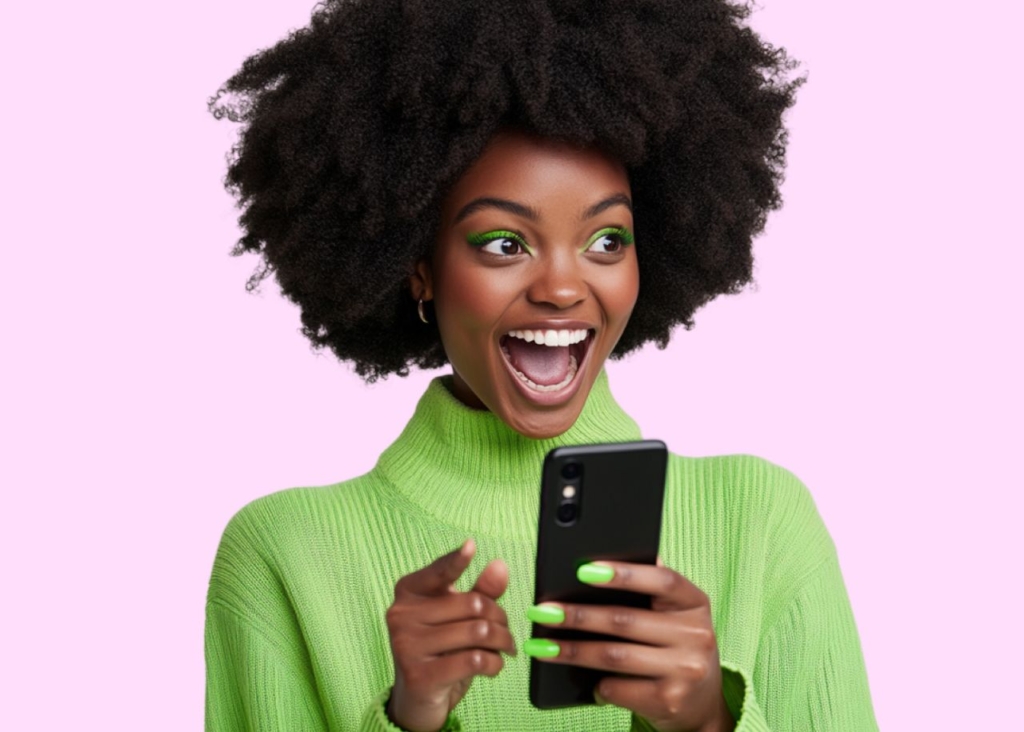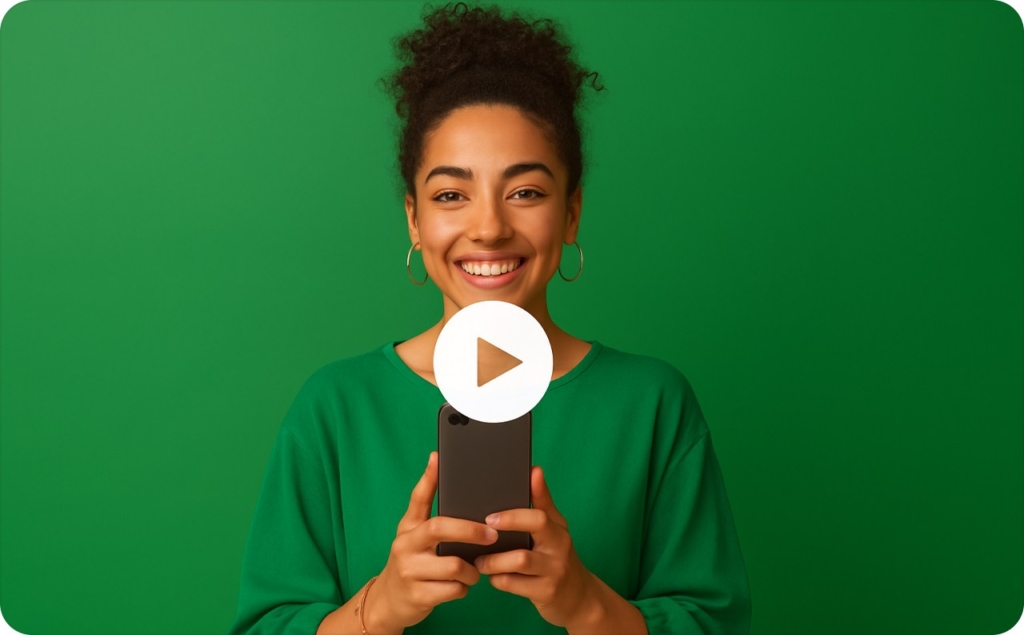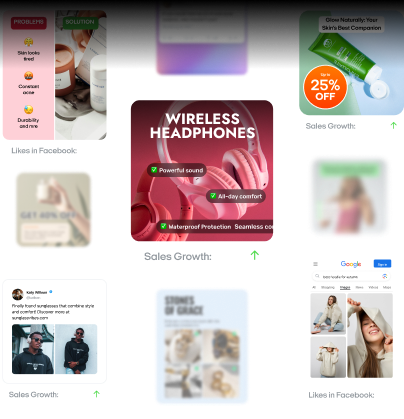AI in influencer marketing: 3 reasons to use AI in your strategies
See why AI is a game-changer in influencer marketing: 3 key benefits to sharpen your strategy and drive better performance.
If you’re wondering whether AI can really boost your influencer campaigns, you’re in good company. A global 2025 survey found that 38% of brands and agencies already use artificial intelligence for influencer work in a limited way, while another 22.4% rely on it extensively. Only 9.5% aren’t using, or planning to use, AI, which means most marketers are at least dipping their toes in.
This shift isn’t just hype. It’s a move toward data-driven influencer discovery, real-time optimization, and automated reporting that takes the guesswork out of your campaigns.
Maybe you have a tiny budget and want to see if AI can save time — or you manage a bigger program and need more precise targeting. Either way, AI’s predictive modeling and audience insights can help you find the right creators and measure results faster.
In the next sections, you’ll learn why AI influencer marketing matters for modern brands and how you can apply it in your own campaigns — even if you’re just getting started.
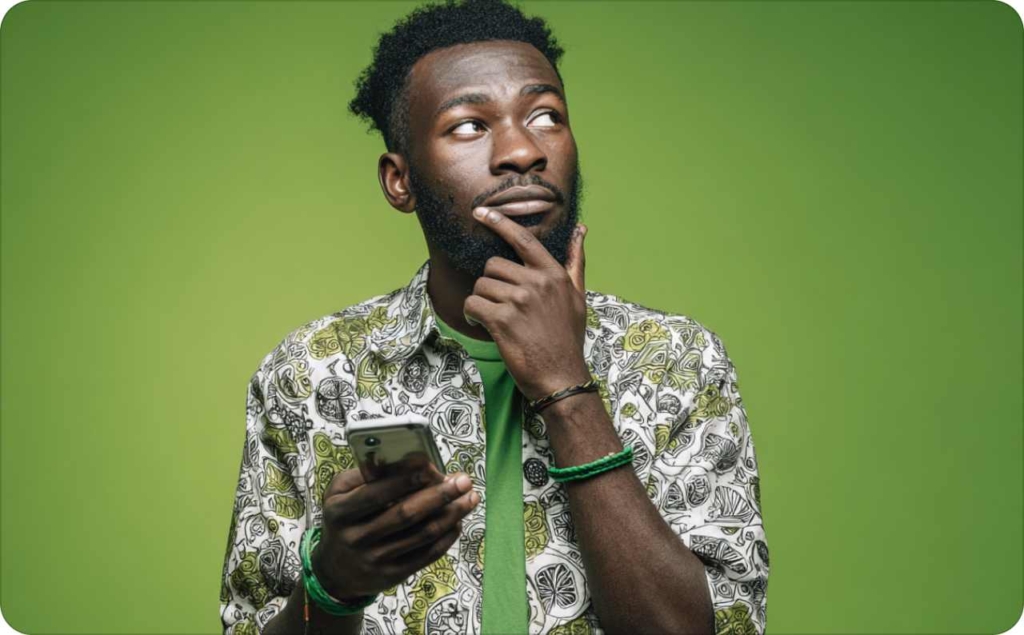
Introduction to AI influencer marketing
If you’re tired of guessing which influencers will elevate your brand, it’s time to consider AI influencer marketing. This data-driven approach uses artificial intelligence to automate your core campaign tasks, like discovering promising creators, interpreting audience sentiment, and tracking performance, all in real time. Instead of juggling spreadsheets, you’ll rely on machine learning and AI influencer analytics to pinpoint exactly who resonates with your audience.
Industry data projects the global AI influencer market size to reach $6.33 billion by 2024, with 73% of marketers already using predictive analytics for audience targeting and influencer vetting.
Another 66.4% have reported significant campaign improvements once they incorporated marketing automation. This isn’t just about time savings; it’s about confidently making decisions that increase ROI and strengthen brand trust.
What is AI influencer marketing?
AI influencer marketing harnesses machine learning, natural language processing, and computer vision to streamline your influencer campaigns from start to finish. Rather than relying on guesswork, these intelligent platforms analyze key data points, such as engagement rates, audience authenticity, and brand fit, to quickly identify creators who align with your goals.
By automating tasks like creator discovery and performance tracking, AI helps you see which influencers genuinely resonate with your target audience and how their content impacts your campaign results. You’ll trade manual trial-and-error for data-driven confidence, freeing you to make smarter decisions, faster.
Whether you’re exploring virtual influencers like Lil Miquela or using hyper-realistic AI avatars, AI takes the guesswork out of influencer marketing and sets you up for greater impact.
Why AI matters for modern influencer campaigns
Struggling with influencer guesswork can quickly drain your budget and derail your growth. That’s where AI-driven influencer tools step in, streamlining vetting by 40% or more. Performance analytics further boost engagement efficiency by 30%, using real-time insights, like cost-per-view and click-through rates, to steer your strategy.
Picture getting instant feedback on which content angles spark conversations. That’s the magic of predictive modeling and automated KPIs at work.
One DTC skincare brand zeroed in on creators whose followers were already skincare-focused, netting a 28% lift in conversions. By cutting out the guesswork, you free up resources to experiment, optimize, and scale, all while protecting your bottom line.
Ready to trade gut feelings for data-backed decisions? Keep reading to see how AI is reshaping each stage of influencer marketing and explore the best practices that help you maximize its potential.
How AI-driven influencer strategies are revolutionizing influencer marketing
Relying on spreadsheets and guesswork to manage influencer campaigns? You’re missing out on data-backed insights that can transform your entire strategy. With machine learning and natural language processing, AI eliminates blind spots at every stage — from top-of-funnel discovery to final ROI reporting. Marketers who still rely on manual processes risk overspending on creators who simply can’t deliver.
The competitive edge of AI-infused campaigns
By tapping into social graph signals and past performance data, AI pinpoints tactics tailored to your unique audience. Many brands report double-digit increases in ROI and faster decision-making once they switch to AI-driven strategies. Three key areas typically see the most impact:
- Lookalike modeling. Identify influencers whose audiences closely mirror your best customers
- Predictive analytics. Forecast campaign outcomes before you invest resources
- Automated reporting. Track cost-per-engagement and authenticity scores in real time
This isn’t just about optimizing one campaign; it’s a sustainable roadmap for every launch or brand partnership you’ll tackle down the road.
AI-driven influencer discovery & selection
Choosing influencers based on follower counts alone is a roll of the dice. AI-powered discovery platforms go deeper, blending data enrichment with lookalike modeling to find creators who align with your core demographics.
These platforms also use fraud detection algorithms to weed out accounts inflated by bots — often cutting wasted spend by up to 30%. Setup is simple: connect your social channels and CRM, define KPIs like authenticity scores or cost-per-engagement, and let AI rank creators by relevance. You still make the final call, but the system does the heavy lifting to surface high-potential influencers who speak your brand’s language.
AI-powered campaign management & automation
Manually managing budgets, timelines, and KPIs often leaves you late to fix underperforming posts. AI-driven automation tools like AI ads generator track metrics such as cost-per-view, click-through rate, and engagement — automatically adjusting creatives, tweaking budgets, or alerting your team the moment performance dips.
Platforms like GRIN and Klear offer KPI dashboards and automated reports, putting your entire team, media buyers, data analysts, and content strategists, on the same page. One fashion brand cut 18% in wasted ad spend when AI flagged an unexpected engagement drop, prompting mid-campaign adjustments.
Compared to spreadsheet-based workflows, AI reduces manual oversight by nearly 24% and accelerates ROI by 15–30%. Rather than reacting days later, you’ll course-correct issues in real time to protect your budget and maximize results.
Ready to embrace the next wave of influencer marketing?
Leverage AI to move beyond guesswork. By automating discovery, optimizing campaign management, and harnessing predictive analytics, you’ll build a more sustainable, data-driven approach — one that scales seamlessly with every product launch or brand partnership you take on.
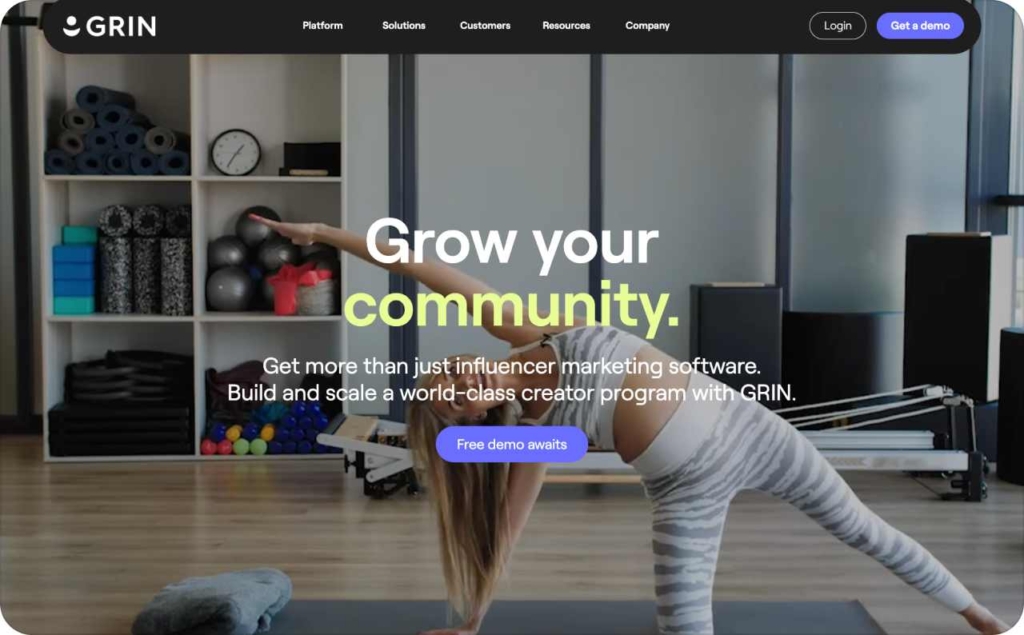
Photo source: GRIN
Advanced AI tools & platforms for influencer marketing
Confused about which influencer tools actually leverage AI? You’re not alone. True AI solutions combine machine learning for ads, natural language processing, and predictive analytics to tackle the most complex parts of your influencer campaigns — from pinpointing high-potential creators to automating fraud detection.
According to Statista, global influencer marketing spend has more than tripled since 2020 and is on track to hit $33 billion by 2025. The reason is clear: AI cuts out the guesswork, providing real-time insights on engagement, tone alignment, and ROI that manual methods can’t match.
Top AI tools comparison & selection
Navigating the AI-enabled tools market can be overwhelming — everyone claims they have “AI.” Here’s a snapshot to help you compare leading platforms at a glance. If you’re unsure which tool aligns with your goals, start a free trial or demo. Look for real-time analytics, authenticity checks, and seamless API integrations to ensure your software scales alongside your campaigns.
| Platform | Best for | Key features | Pricing |
| Sprout Social | SMBs with a content focus | Social listening, Influencer CRM syncing, AI scheduling | Mid-level |
| Brandwatch | Enterprise teams | Advanced sentiment analytics, predictive targeting, lookalike modeling | Higher, but robust |
| HypeAuditor | D2C & performance marketers | Fraud detection, engagement scoring, automated vetting | Mid-tier |
| Upfluence | eCommerce & scaling brands | Affiliate tracking audience overlap analysis, flexible pricing tiers | Flexible |
Choosing the right tool depends on your budget, campaign complexity, and growth targets. Test-drive each option to find the perfect fit for your influencer marketing strategy.
Integrating AI with CRM & marketing automation
Even the best AI influencer platform can falter if it’s disconnected from your core marketing data. That’s where integrations with HubSpot or Salesforce come in, syncing influencer performance metrics directly into your CRM workflows.
When you pair Brandwatch with HubSpot, for example, you can map authenticity scores and cost-per-engagement to fields in HubSpot — triggering real-time updates the moment campaign performance shifts.
This integrated setup lets you pivot strategies mid-campaign and share influencer insights across your entire marketing automation stack. The result? You deliver the right message to the right audience, precisely when they’re most likely to convert.
Need a clear plan? Your AI influencer roadmap
If your influencer results are missing the mark, it’s time for an AI-driven strategy that ties together your goals, discovery process, content execution, and real-time optimization. Here’s how to build that roadmap:
- Define goals & KPIs. Start by establishing metrics that matter — like cost-per-engagement or click-through rate — so every step is data-driven
- Use AI discovery tools. Platforms like CreatorIQ or Upfluence match you with influencers who align with your audience and brand values
- NLP-driven insights. Sentiment analysis tools such as Brandwatch or HypeAuditor gauge audience reactions and feed real-time performance metrics back into a machine-learning loop
- Team alignment. Your data analysts fine-tune AI outputs, your creatives refine the message, and your brand manager enforces consistent tone across all channels
Pro tip: If you’re new to AI influencer marketing, start small. Test one KPI on a tight budget and a focused audience to see what works — then iterate.
Set SMART goals & track the right kpis
Running AI-powered influencer campaigns without clear objectives means algorithms are making decisions in the dark. That’s why you need SMART goals — Specific, Measurable, Achievable, Relevant, and Time-bound.
Example: “Increase average authenticity score by 20% over the next two months.”
Trackable Metrics: CPE, CTR, sentiment polarity, or time-to-insight — each highlights a different stage of the funnel. Have your analysts regularly review automated recommendations for bias or errors. Quick pivots prevent data skew and keep your campaigns on track.
Use data to create influencer content that resonates
A data-powered content strategy leverages AI from concept to final distribution.
- Social listening & sentiment analysis. Identify what your audience actually cares about, then turn those findings into targeted creative angles using topic modeling
- AI-driven content briefs. Once you’ve nailed down your themes, generate briefs with style, tone, and format guidelines for consistent messaging
- A/B testing & continuous feedback. Tools like OpenAI or IBM Watson help you run variations on influencer content. Feed results back into the AI system to refine future messaging
Every insight from your last campaign informs your next one — allowing you to scale personalization without losing your brand’s signature voice.
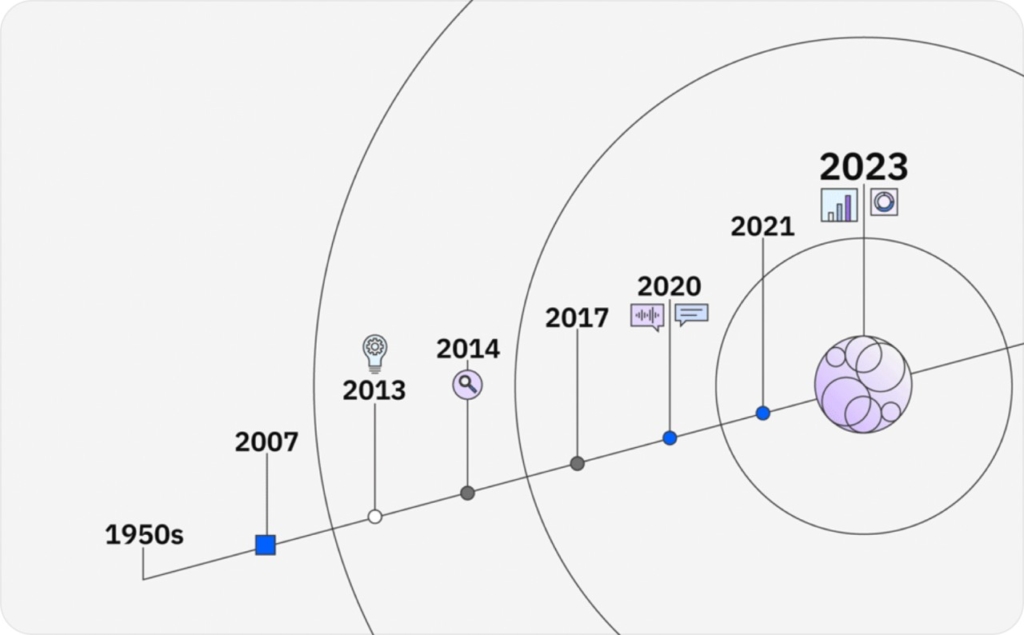
Photo source: IBM Watson
Are you ready for AI influencer marketing in 2025?
Still sticking to manual outreach? You’re likely missing the next big wave in AI influencer marketing. Research shows 51% of marketers now use AI to optimize everything from email campaigns to SEO. This isn’t hype; it’s a data-driven movement that boosts engagement and fuels real ROI.
Expect automated influencer matching, hyper-personalized content, and real-time budget reallocation the moment performance dips. Instead of scrambling to pivot after your budget’s spent, you can predict success before launch. Smaller brands also benefit by honing in on the right audience early on and scaling with confidence.
Which AI trend should you try first?
If you’re overwhelmed, start with a single strategy that meets your most pressing need:
- Predictive analytics. Perfect if you’re struggling to track ROI
- Virtual influencers & immersive experiences. Ideal when you need a standout campaign angle
- User-friendly platforms. For smaller teams, consider Klear or Influenxio — both offer free trials and simple dashboards, making it easy to integrate AI into ad campaigns or email funnels
Need an influencer who never sleeps? Go virtual
Virtual influencers like Lil Miquela or Lu do Magalu are CGI-based brand ambassadors that never go off-script. They also open doors to metaverse platforms for immersive, 24/7 campaigns. One beauty brand saw over 1 million interactions in just 2 days by launching a digital avatar — doubling engagement compared to its human-led campaign.
ROI tip: Track session length, sentiment scores, and conversion intent to measure impact.
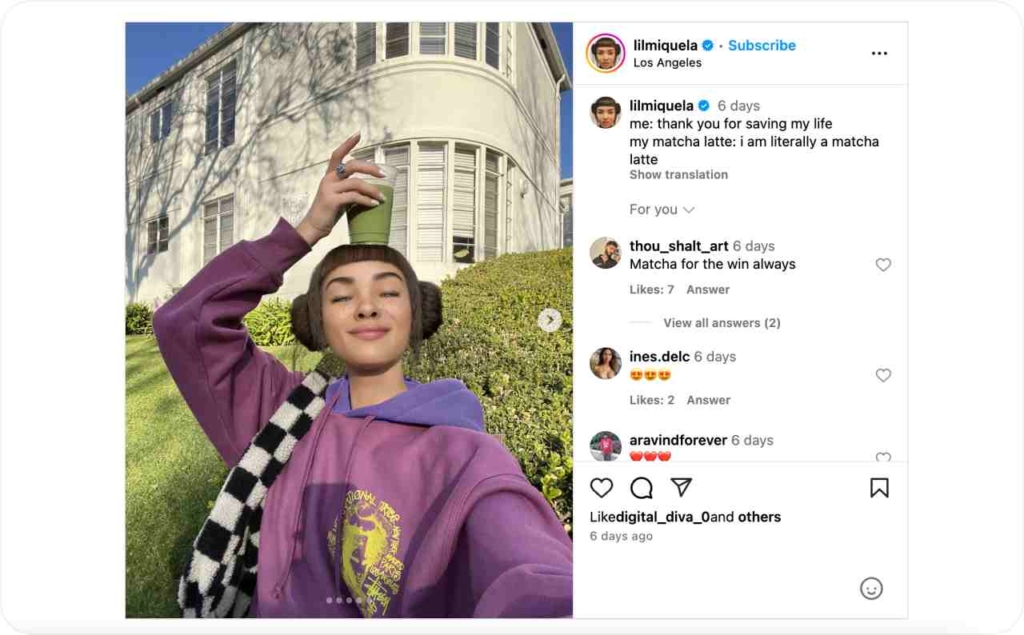
Photo source: @lilmiquela on Instagram
Protect your budget with predictive analytics
Predictive analytics taps into your campaign data, live engagement, and audience behavior to forecast winning strategies. Real-time optimization tools automatically shift budgets to high-performing posts or cut spending on underperformers.
- Tools to try. HypeAuditor’s budget planner or Julius AI — accessible options for smaller teams
- Proven results. One fashion brand spent $20K, hit 2.8 million impressions, and boosted ROI 31% by reallocating funds mid-campaign
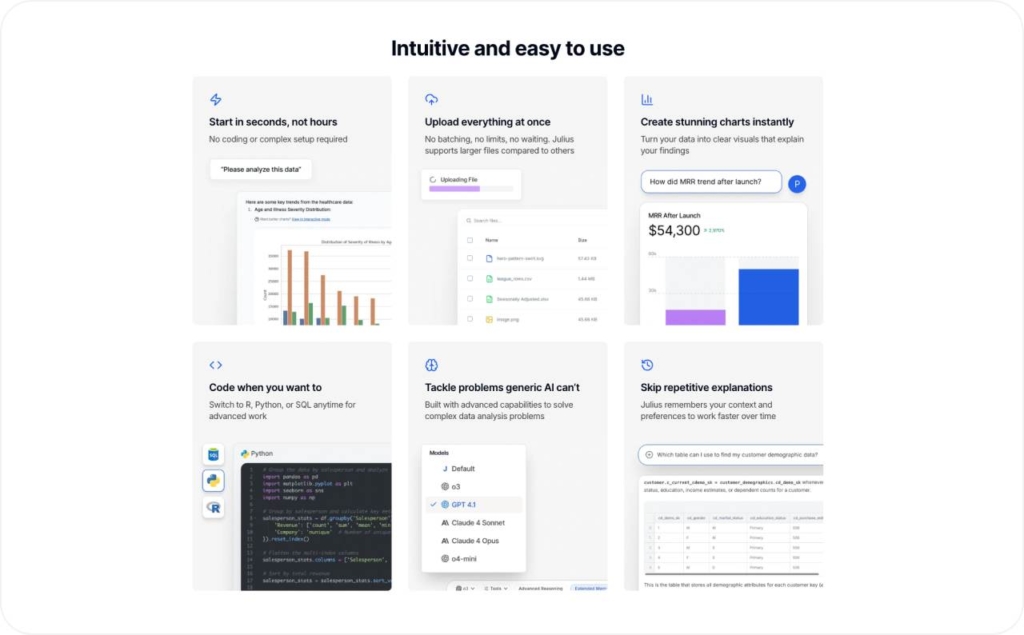
Photo source: Julius AI
Bring AI trends into your current workflow
You don’t need a huge team to leverage AI in influencer marketing. Even solo marketers can pick one KPI, like cost-per-engagement, and run a targeted pilot. Delegate creative direction to a design lead, and have an analyst handle data checks.
When asked why you’re investing in AI, lead with the numbers:
- Reduced wasted spend. Predictive analytics pinpoints where to allocate budget
- New customer engagement. Metaverse experiences capture attention in fresh ways
- Faster, data-driven decisions. Machine learning identifies your ideal influencers far more efficiently than any spreadsheet ever could
In an era where every dollar counts, AI-driven influencer marketing isn’t just an upgrade — it’s your competitive edge.
Ready to try an AI influencer campaign? Here’s your fast-track plan
Getting started with AI influencer marketing doesn’t have to be complicated. This quick roadmap weaves together the essentials, from predictive analytics to virtual influencer trends, so you can plan, launch, and measure your campaigns without relying on guesswork. You’ll define key metrics, run focused tests, and connect your results to broader business objectives like revenue or brand lift.
1. Lay the groundwork in one week
Begin by setting a clear target, such as aiming for a 10% drop in cost-per-engagement or a 15% jump in sentiment scores. Keep your budget modest, somewhere between $500 and $1,000, so you can gather insights without risking your entire marketing spend.
Select a single AI tool, such as Klear for influencer discovery or HypeAuditor for analytics, and decide how you’ll track performance. You can use the platform’s built-in dashboard or set up a simple Google Sheet.
As you organize your team, assign someone to handle data checks and another to manage creative assets. By the end of the first week, you’ll have your main KPI, a budget cap, and your initial benchmarks in place.
2. Test a small campaign for two weeks
Narrow your focus by choosing just one or two influencers and sticking to a single channel. Keep your key metric, whether it’s engagement, conversions, or sentiment, front and center. Pay attention to daily results, and don’t hesitate to make changes if you notice performance slipping.
AI tools thrive on real-time adjustments, so you can quickly reallocate budget when you spot an upward trend. Aim for a stretch of five to seven days where your chosen metric remains stable or shows improvement; this is your confirmation that you’ve found a winning approach.
3. Scale up when you see results
Once your pilot either meets or surpasses your expectations, it’s time to expand. Move from a free trial to a paid plan in your chosen AI platform if you need features like budget pacing or advanced audience segmentation. Instead of relying on a single influencer, you can branch out to multiple creators or additional social channels.
Maintain realistic goals, such as aiming for a 20% lift in conversions or focusing on boosting repeat purchases in line with overall business targets. Use a trusted system, like Notion or your platform’s internal dashboard, to keep track of evolving data.
As you run more campaigns, you’ll accumulate insights that allow you to refine your approach so each decision is based on proven performance rather than guesses. This measured progression ensures that every new campaign builds on real, data-driven results.
Also recommended

